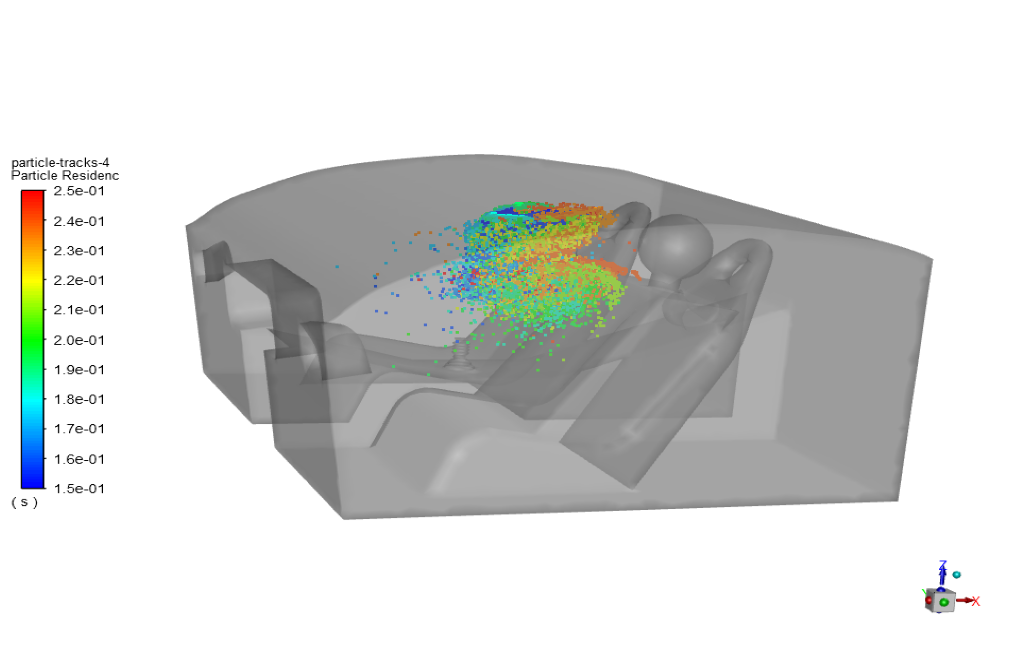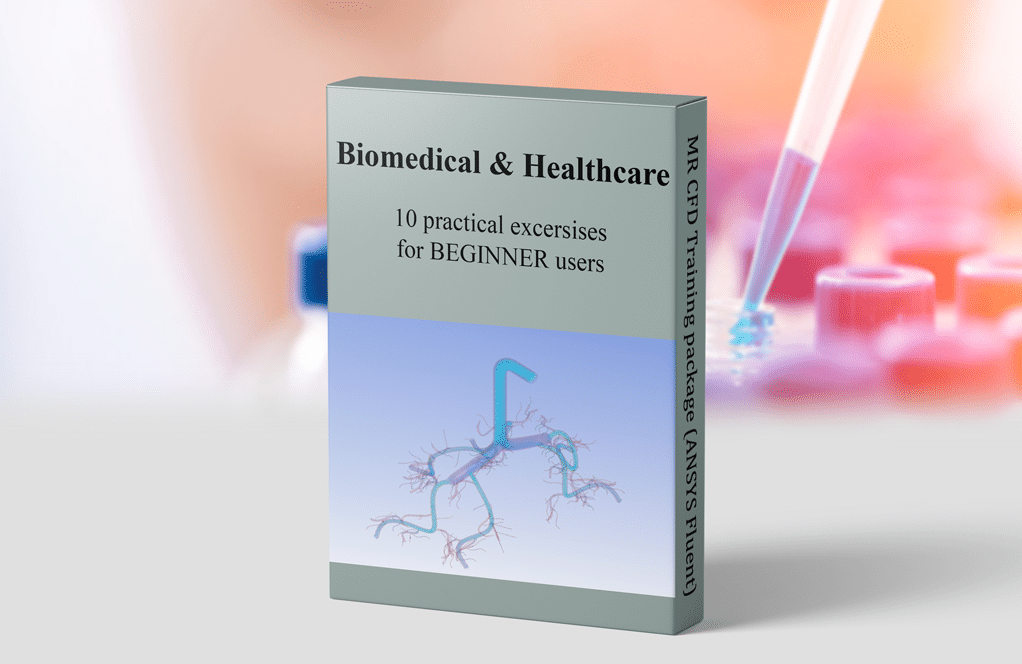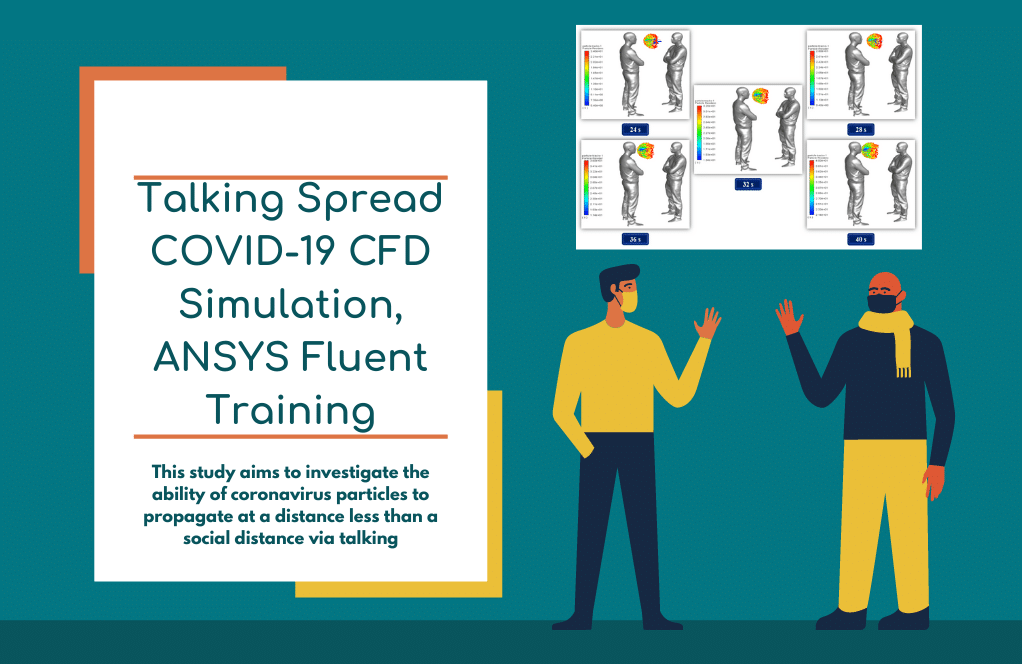Corona Virus spread in a Car due to the Cough
$160.00 $80.00 Student Discount
- The problem numerically simulates Corona Virus spread in a Car due to the Cough of the Driver using ANSYS Fluent software.
- We design the 3-D model by the Design Modeler software.
- We Mesh the model by ANSYS Meshing software, and the element number equals 290403.
- We perform this simulation as unsteady (Transient).
- We use the Species Transport model to define oxygen, nitrogen and water vapor.
- We use the DPM to study virus particles Discretely in a continuously fluid space.
- The Injection type is Droplet which is dispersed from the mouth due to cough.
To Order Your Project or benefit from a CFD consultation, contact our experts via email (info@mr-cfd.com), online support tab, or WhatsApp at +44 7443 197273.
There are some Free Products to check our service quality.
If you want the training video in another language instead of English, ask it via info@mr-cfd.com after you buy the product.
Description
Corona Virus Spread in a Car Due to the Cough of the Driver CFD Simulation Tutorial by ANSYS Fluent
This simulation is about Coronavirus spread in a Car due to the Cough of the Driver via ANSYS Fluent software. We perform this CFD project and investigate it by CFD analysis.
Coronavirus (COVID-19) is the world’s biggest human challenge; this disease’s high contagion rate is problematic. Coughing or sneezing of a COVID-19 person without a mask can spread the Coronavirus in that space.
One of the doctors’ important recommendations regarding preventing disease contagion between people is maintaining social distance between people in closed spaces. The interior of a passenger car can transmit the virus to its occupants.
This project simulates the release of virus particles from the mouth of a corona carrier patient inside the interior of a car. The purpose of this study is to investigate the diffusion power of virus particles inside the car interior.
The geometry of the present model is drawn by Design Modeler software. The geometry of this model involves a car. A person is also designed as a car driver in a car seat. The model is then meshed by ANSYS Meshing software. The model mesh is unstructured, and 290403 cells have been created.
Methodology
For the present simulation, the Discrete Phase Model (DPM) is used; Because this model allows us to study a mass of particles discretely or particle by a particle in a continuously fluid space.
The wet particles of the virus secreted from the patient’s mouth are considered a discrete phase, and the airflow inside the car is considered a continuous phase.
The physical models of discrete particles defined in this simulation include two-way turbulence coupling meaning the two-way interaction between continuous and discrete phases by activating the interaction with the continuous phase.
The discrete phase also affects the continuous phase; stochastic collision means irregular droplets collide, coalescence means droplets combine, and breakup means the collapse of the droplets.
Also, the type of discrete phase behavior will be time-dependent and with a time step of 0.001 s (activating the unsteady particle tracking mode). After activating the discrete phase model, the Injection process must be defined, determining the type and quality of discrete particles injected into the model.
In this model, injection particles are defined as droplets; Thus, water is defined as droplets, and water vapor is defined as an evaporating gas species.
It should be noted that the Droplet mode is applied when the Species Transport Model is also activated.
In this model, the species transport model, including three different gases such as oxygen (O2), nitrogen (N2), and water vapor (H2O), are activated. The air will be the main fluid in the computational zone.
Conclusion
After simulation, we obtain particle tracking of the virus particles at different time intervals. This particle tracking is based on the particles’ residence time and the particle diameter’s size.
The particle tracking shows well the spreading path of the virus particles. This path shows the strength of the spread of the virus. After a few moments, these virus particles begin to disappear or settle on the car’s interior surfaces.
Reviews
Related products
-
Sale
Coronavirus CFD Simulation Training Package, 10 Practical Exercises
Rated 4.80 out of 5$499.00$249.50 Student Discount






Ericka Jast –
The subject of your products is significantly updated.